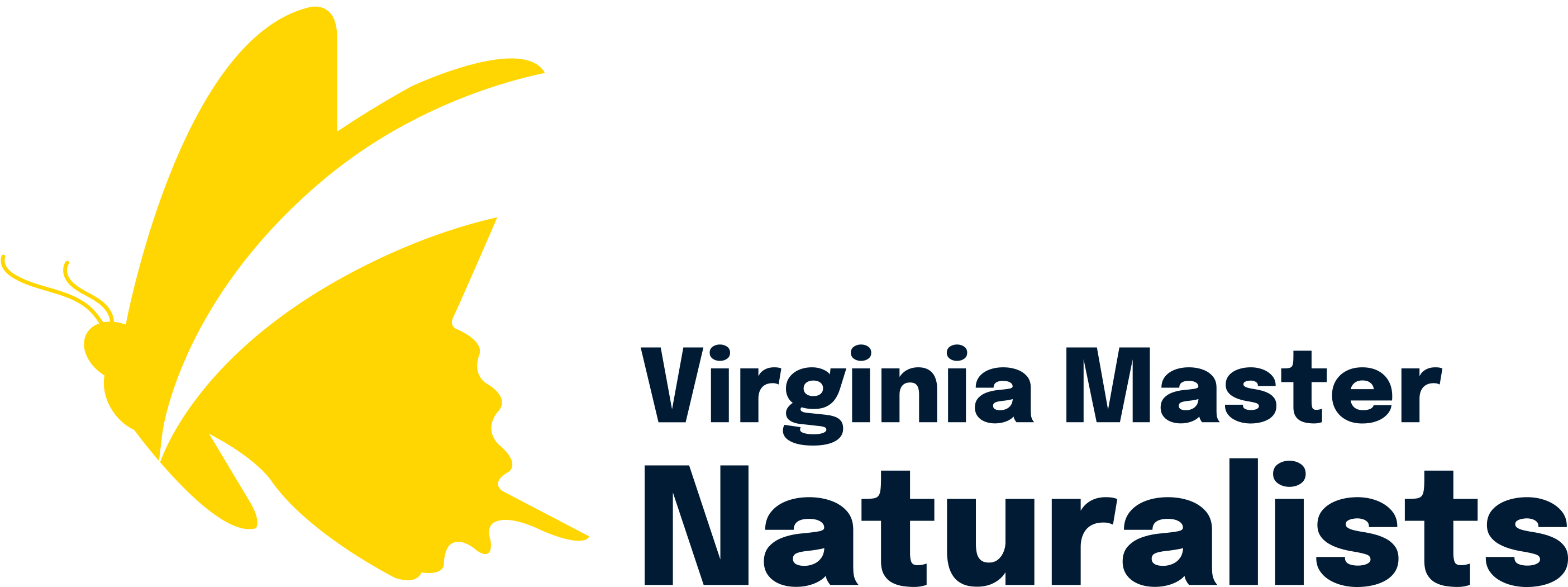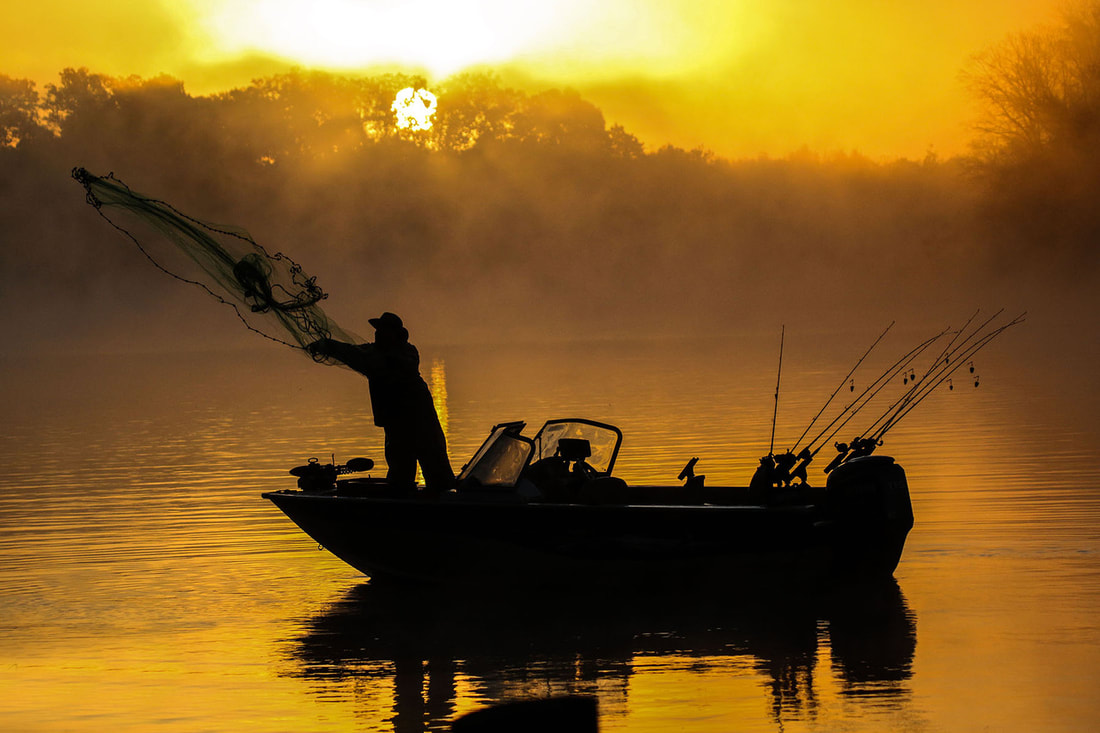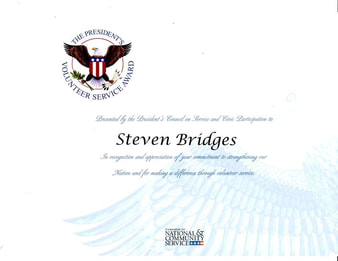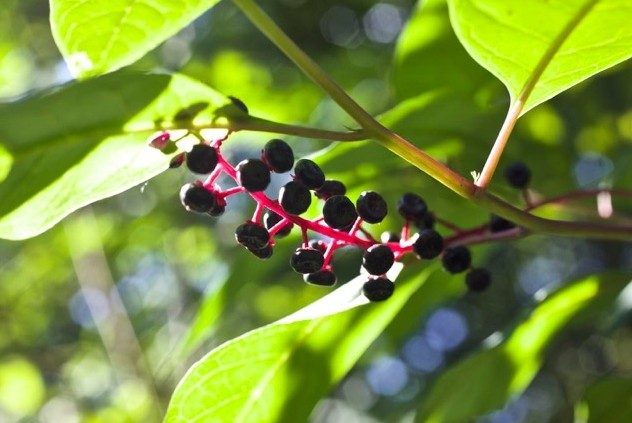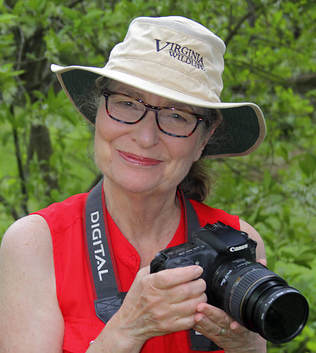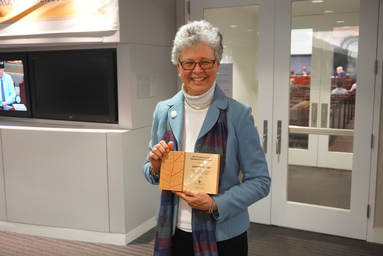 Joanne Hutton, 2017 Bill Thomas Volunteer Award winner. Photo by Bill Browning, VMN-Arlington Regional Chapter.
Joanne Hutton, 2017 Bill Thomas Volunteer Award winner. Photo by Bill Browning, VMN-Arlington Regional Chapter.
ARMN Member Joanne Hutton Receives Bill Thomas Outstanding Park Service Volunteer Award
–Submitted by Kasha Helget, VMN-Arlington Regional Chapter
On April 24, 2018, ARMN member, Joanne Hutton, was honored with a Bill Thomas Outstanding Park Service Volunteer Award for her volunteer work in Arlington last year. This award was established to pay tribute to lifelong parks volunteer Bill Thomas and to honor and encourage residents with passionate dedication and support for the county’s dynamic programs, natural resources, and public open spaces.
Joanne is also a member of the Master Gardeners of Northern Virginia and trained with ARMN upon retiring from Arlington County’s Parks Division, where for five years she, trained VCE Master Gardeners and oversaw the county’s Community Garden program.
Among her ARMN projects, Joanne worked with the Audubon Society of Northern Virginia to establish a native plant demonstration garden at Potomac Overlook Regional Park, and she continues to lead the ongoing maintenance of that garden. She helped form the Audubon at Home (AAH) Ambassadors program for Arlington and Alexandria. AAH volunteers visit individual homeowners to offer guidance on best environmental management practices and increased use of native plants to improve habitat in their yards. Joanne has also worked on the Steering Committee for the Plant NOVA Natives Campaign, helping edit its published guide, Native Plants for Northern Virginia, encouraging property owners to buy and plant locally native plants.
She trained in Arlington’s first Tree Steward class and in 2010, assisted in surveying trees on Arlington’s 256-acre Joint Base Myer-Henderson Hall to help better manage its tree population. She also has been a community gardener at Arlington’s Barton Park Community Gardens since 1999, and served as Chief Gardener for three years, continuing on its steering committee. Her focus as a Master Gardener remains public and continuing education.
Joanne actively participates in citizen science projects, including Christmas bird counts, monitoring bluebird nest boxes at Fort C. F. Smith Park, and assisting the Virginia Breeding Bird Atlas to determine distribution and status of breeding bird populations. She participated in Arlington’s first BioBlitz in 2017, a 24-hour citizen science inventory of plants and wildlife.
In her time with ARMN, she has brainstormed ways to attract new members and make them feel welcome, served as a mentor to new members, and created an overall sense of inclusion within the group. As Joanne’s neighbor and fellow ARMN member Bill Browning puts it, “Joanne is a literal force of nature by her knowledge of the natural world, her willingness to share this knowledge, and her desire to make members in the Arlington Regional Master Naturalists feel welcome and have a sense of camaraderie.”
Joanne serves a multigenerational cohort to ensure that Arlington residents have the skills and information they need to be good stewards to the environment. Her service has inspired and encouraged others to join the local community of active volunteers. The natural world in Arlington has a true ally in Joanne; the benefits of her volunteer work can be seen throughout the County.
— from Arlington County’s Environment webpage .
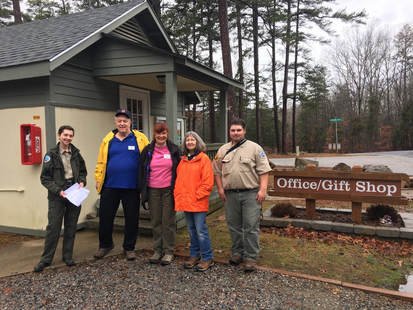 VMN-Central Piedmont Chapter members are joined by Virginia Department of Conservation and Recreation staff as they begin a walk through Twin Lakes State Park. Photo by Evan Spears, VMN-Central Piedmont Chapter.
VMN-Central Piedmont Chapter members are joined by Virginia Department of Conservation and Recreation staff as they begin a walk through Twin Lakes State Park. Photo by Evan Spears, VMN-Central Piedmont Chapter.
Wild Happenings for VMN-Central Piedmont Chapter Members
–Submitted by Mary Ames, VMN-Central Piedmont Chapter
There’s a lotta wild still to be discovered in the Heart of Virginia, and that’s just what our chapter members intend to do. We recently partnered with Virginia Department of Game and Inland Fisheries to monitor the Heart of the Piedmont Loop of the Virginia Birding and Wildlife Trail Adopt a Trail project.
Team members did not let rain dissuade them from the task at hand, and were able to monitor for birds and other wildlife, record their findings on soggy paper, and return to the park office for a photo op with the staff.
On their initial visit to Prince Edward-Gallion State Forest, another AAT group was exploring a wetland area which appeared to be a possible vernal pool site. As they searched for signs of life, a turtle was found sunning itself on a log. A photo of the turtle (thought to be a Spotted Turtle) was sent to the Virginia Wildlife Mapping Project on iNaturalist. The identification was confirmed, and members and staff learned that this was a first documentation for Prince Edward County for this species, and the date (February 16, 2018) may be one of the earliest observation dates on record for Virginia. The spotted turtle is listed as a species of “high conservation concern” in the Virginia Wildlife Action Plan.
Only one day later, another chapter member rediscovered a Loggerhead Shrike while on his way to our annual Bluebird Building Workshop, a collaboration between our chapter and Bear Creek Lake State Park.
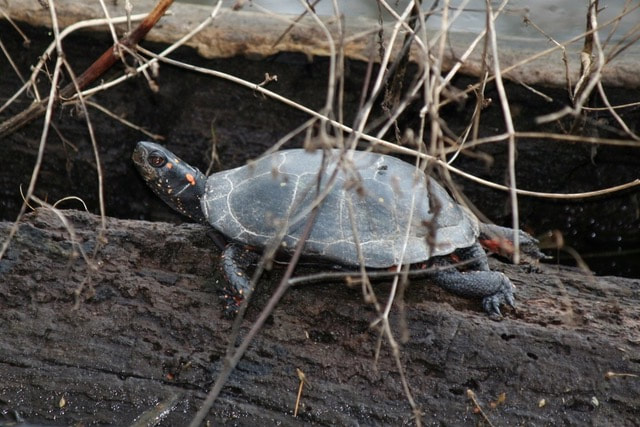
Spotted Turtle (Clemmys guttata), Prince Edward-Gallion State Forest. Photo by Evan Spear, VMN-Central Piedmont Chapter.
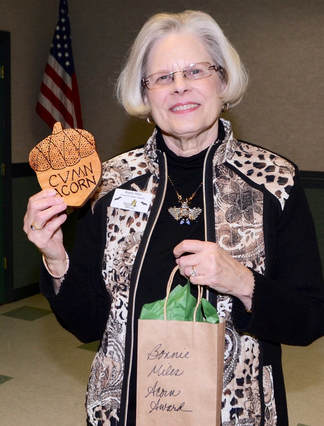 Bonnie Miles, VMN-Central Virginia Chapter, receives the chapter’s Acorn Award. Photo by Nora Cox, VMN-Central Virginia Chapter.
Bonnie Miles, VMN-Central Virginia Chapter, receives the chapter’s Acorn Award. Photo by Nora Cox, VMN-Central Virginia Chapter.
Central Virginia Chapter Awards the Acorn
–Submitted by Shelly Evans, VMN-Central Virginia Chapter
The Acorn Award is intended to be the highest honor the Central Virginia Master Naturalists bestows on a member. Just as a mighty oak starts as a small acorn and grows into one of the largest and most majestic trees in the forest, the Acorn Award is bestowed to those who start as a trainee, and through extraordinary work, over a period of time, grow into a Master Naturalist who makes significant contributions to the chapter and/or community.
This year the Acorn Award was presented to Bonnie Miles. Bonnie has recorded over 460 hours rehabilitating injured or orphaned bats in Virginia! She has worked actively as an invited speaker on the topic of bat conservation as well as maintaining a Category IIA Permit from the VA Dept of Game and Inland Fisheries to rehabilitate bats and return them to the wild.
A Noteworthy Educator in the High Knob Chapter
–Submitted by Phil Meeks, Chapter Advisor, High Knob Chapter
April Addington, VMN-High Knob Chapter, earned the Upper Tennessee River Roundtable’s Educator of the Year award for her work teaching youth about the environment and involving them in local natural resource projects in her “day job” as a science teacher at Twin Springs High School in Scott County.
Historic Southside Volunteer Recognized for Citizen Science Contributions
John Bunch, VMN-Historic Southside Chapter, was
profiled by CitSci.org for his contributions to the Virginia Vernal Pools Collaborative project. John has been collecting and reporting data for that project since 2014!
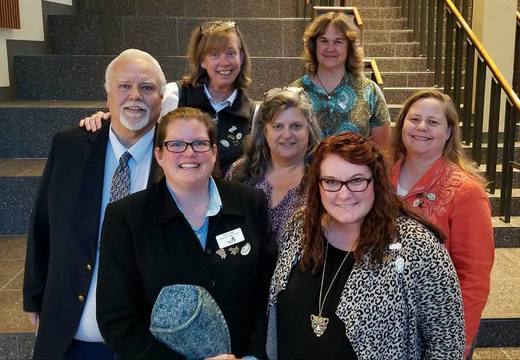 Volunteers in the Holston Rivers Chapter received the Hope Award at a ceremony at Emory and Henry College.
Volunteers in the Holston Rivers Chapter received the Hope Award at a ceremony at Emory and Henry College.
Holston Rivers Master Naturalists Recognized by Emory and Henry College
Congratulations to our Virginia Master Naturalist- Holston Rivers Chapter (Abingdon) for being awarded the Hope Award from Emory and Henry College! Here’s a quote from the award: “The 2018 Hope Awards is, in part, a celebration of the work of civic leaders and organizations toward a greater stewardship of the natural environment. The 2018 award for a civic organization recognizes the Holston Rivers Chapter’s education about and advocacy for the diverse and vibrant natural environment of the Holston watershed. By their learning, through their teaching of others, by means of their volunteer service, the Master Naturalists bear witness to a stewardship that joins head, heart, and hands in service to creation and the common good. The work of your organization makes clear the precept that in order for it to be dynamic and democratic, the civic life in a place must take into full account the natural environment of that place, and that the health of the environment in one place is profoundly joined to the health of the environment in all places. In so doing, the Holston Rivers Chapter is making this beautiful watershed a better, healthier, stronger, and more humane place for all people. Emory & Henry College and the Appalachian Center for Civic Life are founded in part on the principle that all people have within them the talents and abilities to make a difference in the world and in the lives of their neighbors. In the case of the Holston Rivers Chapter of the Virginia Master Naturalists, this is also true of organizations. In the long work of stewardship in this good place, you are our teacher.”
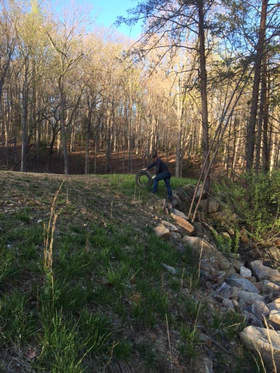 VMN volunteers and other community members removed tires and other trash from a very litter-filled pond. Photo by Lisa Matthews.
VMN volunteers and other community members removed tires and other trash from a very litter-filled pond. Photo by Lisa Matthews.
Merrimac Farm Chapter Volunteers Make Impacts This Spring
–Submitted by Lisa Matthews, VMN-Merrimac Farm Chapter
We had 15+ members participating as guides and staffing our table this year in the Bluebell Festival at Merrimac Farm. We did a demonstration called the “Rarity of Blue”. In animals and most plants, the blue pigment is exceedingly rare. We showed how “blue” feathers are n
ot really blue but brown and how structures in the feathers and skins of animals and the cell structure and the use of pH and other pigments in blue reflect the color blue rather than actually being blue. We hope to expand on this for future Bluebell Festivals with more hands on activities.
Also this spring, we cleaned a locked retaining pond in Lake Ridge, VA that feeds into the Occoquan River. It was filled with mostly plastic bottles. We estimate that we pulled out approximately 800 plastic bottles.
New River Valley Trainees Go Above and Beyond
–Submitted by Dianna Bridges, VMN-New River Valley Chapter
The VMN-New River Valley Chapter graduated another cohort of new VMN volunteers in December. What made their graduation especially noteworthy, however, was that nearly half of the eighteen graduates were also recognized as Certified Virginia Master Naturalists. On top of completing all the training requirements, these eight volunteers also completed 40 hours of volunteer service and 8 hours of continuing education before the end of the training course! Congratulations to Autumn Benni, Justin Ciallella, Natalie Edison-Wallace, Marsha Hertel, Maria Moll, Woody Nackley, Trish Porter, and Rebecca Sears.
Peninsula Chapter Recognizes Special Volunteer Accomplishments
–Submitted by Daina Henry, VMN-Peninsula Chapter
In a great example of recognizing volunteers for their unique contributions, the VMN-Peninsula Chapter gave out some special awards to their members.
- The Rock Award – to members who have been the foundation of the chapter and have served as officers: Brad Halcums and Pam Courtney
- Perpetual Award – the member who has been around the longest and contributing (a model of Newtons Cradle): Sandy Graham
- Quill Pen Award – our newsletter editor who has been doing this forever ( a quill pen): Susan Walton
- Moving into the 20th Century Award or the Abacus Award – to the treasurer for moving us from paper to digital XL for budgets and payments: Bill Boeh
- Smile Award – the member who never stops smiling and giving encouragement ( smiley cup): Loye Spencer
- Frogman Award – the member who spent a lot of time with frogs. (stuffed frog): Larry Lewis
- Wet Feet Award – the member who spent a lot of time cleaning water ways. (waterproof gloves): Bev Nunnally
- Mourning Dove Award – the two members who like doves are always together, and birdwatching (two stuffed birds): John and Marilyn Adair
- Behind the Table Award ( a seat cushion) to the member who spent the most time behind the outreach table: Chris Gwaltney
- Get a Life Award – to the member who accumulated in one calendar year 606 volunteer hours and 60 continuring education hours (tickets to the movies): Troy Bonavita
- Friend to Nature Award for the Trex Recycling Program – to the member who coordinated the collection of 1000 punds of plastic (wonder woman tiara): Diane Peters
They also recognized Dynamic Duos, couples who support and encourage each other to volunteer.
John and Marilyn Adair
Dawn and Troy Bonavita
Charlotte and Denis Boudreau
John and Shirley Chirch
Rhonda Graves and Ellen Coleman
Brad Halcums and Pam Courtney
Yukari and Lee Hughes
Phyllis and Fred Kohlman
Susan and Lee Morris
David and Maria Nissen
Dave and Phyllis Singletary
Jeanette and Ray Yoh
Pollinator Waystation and Herbarium Transcriptions with the Shenandoah Chapter
An article titled “Pollinator Waystation”, with story and photos by Shenandoah Chapter member Marie Majarov, was published in the March/April Virginia Wildlife Magazine! Read all about the chapter’s participation and partnering with VDOT, Blandy Experimental Farm, Virginia Native Plant Society, Loudoun Valley High School, Piedmont Environmental Council, Loudoun Wildlife Conservancy, and Clarke County’s Natural Resources Planner to install a 15,900-square-foot pollinator plot at the Rt. 50 Waterloo Park and Ride.
Kudos to Shenandoah Chapter member Jane Colgan for her data entry contributions to Zooniverse: Notes from Nature. Jane made over 4400 entries to digitize herbaria for Virginia wetlands, and also a large portion of the Virginia pollinators! Jane shares her Zooniverse adventure here:
“I dove into Zooniverse: Notes from Nature, starting with “Pollinator Plants of Virginia I”. The entries were not difficult and many of the sites in Northern Virginia were close to where we used to live. I limited the data entry to one hour sessions. As time went on the names of the investigators, as well as their entries, became more familiar and I googled many of them. My interest grew when I had to decipher some of the handwritten pieces. To be sure I spelled places correctly I looked them up and, although I have lived in Virginia most of my life, I was not acquainted with many of the counties. More questions arose. Why is Lee County stuck in the far southwestern part of the state? What does Botetourt mean? I printed out a map of the state and referred to it often so that I could learn the locations. Then there were more questions. Why so many Kings, Queens and Prince names? That was another search. And so on. (The earliest entry I saw had been collected in 1948 by Bernard Mikula; but alas I could not track him down.)
When “Pollinator II” was finished I missed the experience. Luckily Wetland Specialist Plants I and II came along, and I entered all of them. (I would love to meet Gary Fleming but he might think I was a plant groupie!)”
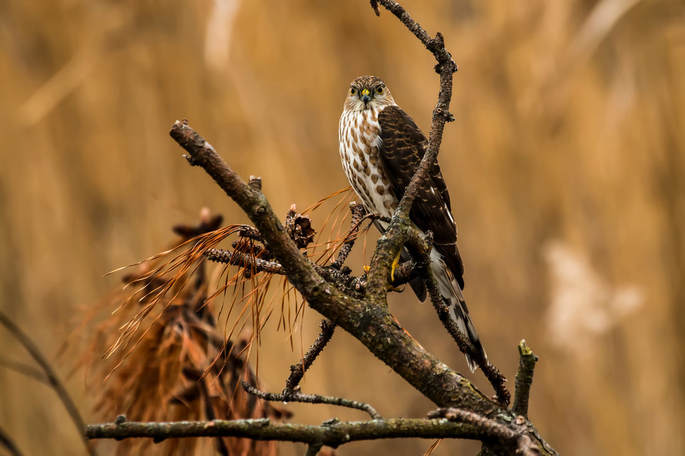 Sharp-shinned Hawk on Chincoteague by Judy Jones, VMN-Historic Rivers Chapter.
Sharp-shinned Hawk on Chincoteague by Judy Jones, VMN-Historic Rivers Chapter. 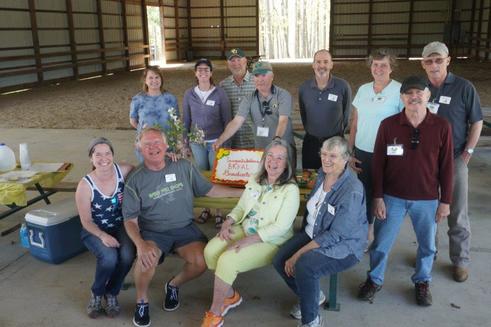 Back row, from left: Jennifer Helms, Karen Rasmussen, Bob Rasmussen, Geoff Orth (Training Coordinator), Steve Gardner, Becky Frauen, Terry Lovell. Front row, from left: Dorian Albano, Bob St. John, Marcia St. John, Shearer Rumsey, Larry Deal Not pictured: Frances Lash, Lane Cook, Kathy Williams, Cathy Logue.
Back row, from left: Jennifer Helms, Karen Rasmussen, Bob Rasmussen, Geoff Orth (Training Coordinator), Steve Gardner, Becky Frauen, Terry Lovell. Front row, from left: Dorian Albano, Bob St. John, Marcia St. John, Shearer Rumsey, Larry Deal Not pictured: Frances Lash, Lane Cook, Kathy Williams, Cathy Logue. 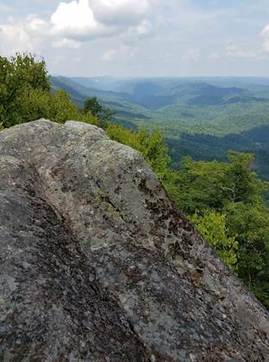 Overlook on a brand-new section of the Pine Mountain Trail
Overlook on a brand-new section of the Pine Mountain Trail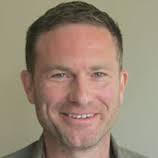 Rentz Hilyer, VMN-Fairfax Chapter
Rentz Hilyer, VMN-Fairfax Chapter 